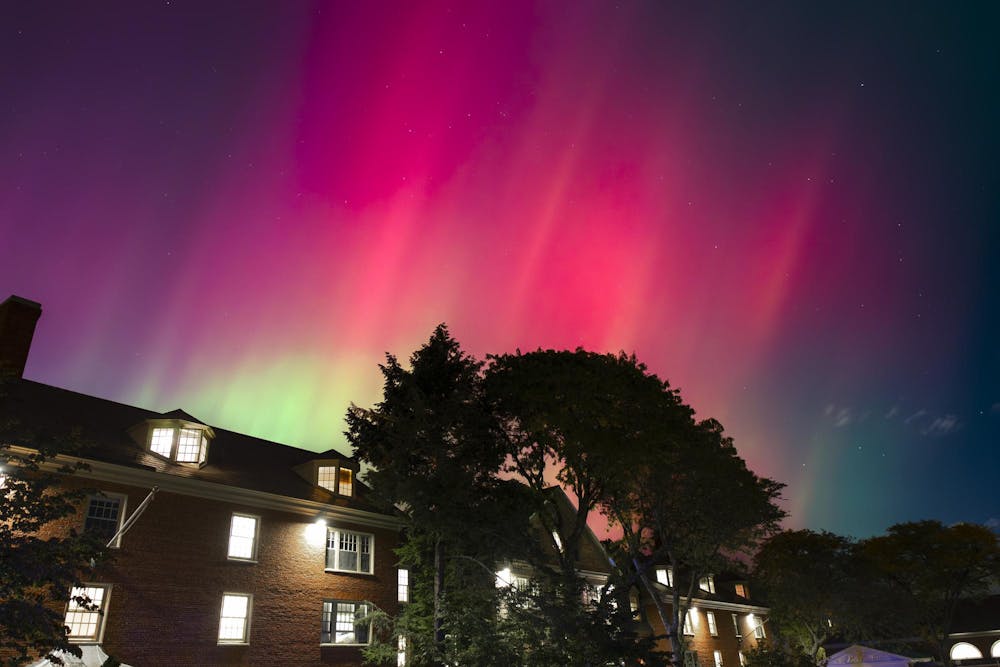Dean Zweiman ’27 was studying for an engineering midterm in his Wayland dorm when the all-caps text popped up on his phone: “WHY IS THE SKY RED.” It was Thursday night, just after 7 p.m., and the sky was, in fact, red.
Zweiman slid a battery into his camera, grabbed his tripod and ran outside to see the northern lights.
The moment felt special to Zweiman. “Everyone, for a moment, was allowed to drop what they were doing or what they were worried about and focus on something that is really rare and special,” he said.
The aurora borealis, also known as the northern lights, was visible in Providence Thursday night for about half an hour. The different colors — including red — are created when a solar wind, a stream of electrons and protons from the sun’s atmosphere, slams into Earth’s atmosphere. The energy of the particles causes the atmosphere to fluoresce.

The northern lights become the most intense during the peak of the sun’s roughly 11-year solar cycle. For this current cycle, that peak has just started and it’ll continue through 2026. The earth experienced a major geomagnetic storm last week, with mass ejections of solar particles and high solar wind speeds, causing the northern lights to intensify and occur much further south than usual.
An aspiring aerospace engineer and self-described “astronomy nerd,” Zweiman shared that he picked up astrophotography as a hobby only recently. He traveled to Vermont to photograph the solar eclipse in the spring, and has traveled to Iceland to shoot the aurora borealis.
This time, though, without expecting it at all, the aurora came to him.
Across campus, people texted each other to go outside and look at the sky through their camera lens, where the colors appear more intense because a camera can capture more light than the human eye. But some got the news too late, like Molly Woodfin ’26, who was in a physics exam while the sky was lighting up.
“I had to stop looking at Instagram afterwards because I was so upset I missed it,” Woodfin said.
While Woodfin was stuck answering questions about motion and friction, Zweiman was assembling his camera and tripod on the Main Green. Around him students stared up at the sky, enjoying the scene and taking photos on their phones.

“There was a lot of laughter,” Zweiman recalled.
Zweiman, a long-time photographer of landscapes, said he loves to “photograph what’s natural” or “untouched by humans.” But there’s something else about photographing the night sky, and it’s a bit sappy, he warned.
“I don't think there's anything more unifying,” Zweiman said. “We all look up and see the same sky.”
Correction: A previous version of this article misstated Zweiman's concentration. The Herald regrets the error.
Haley Sandlow is a contributing editor covering science and research. She is a junior from Chicago, Illinois studying English and French.





